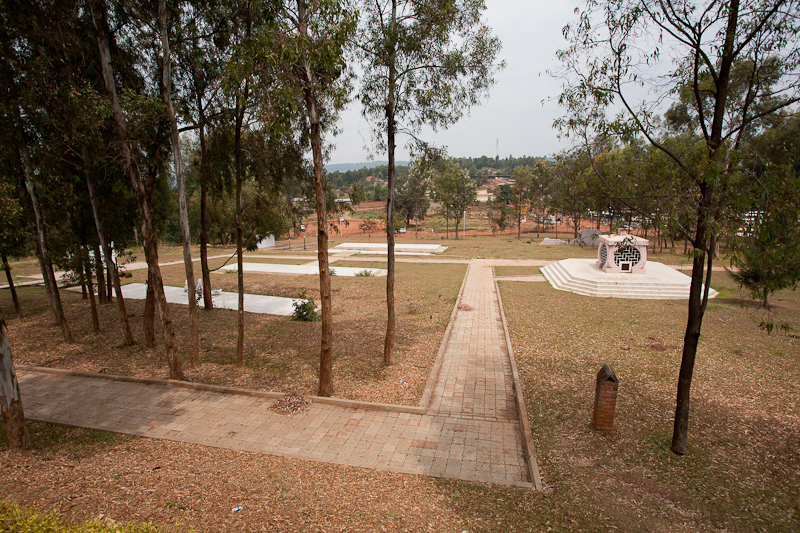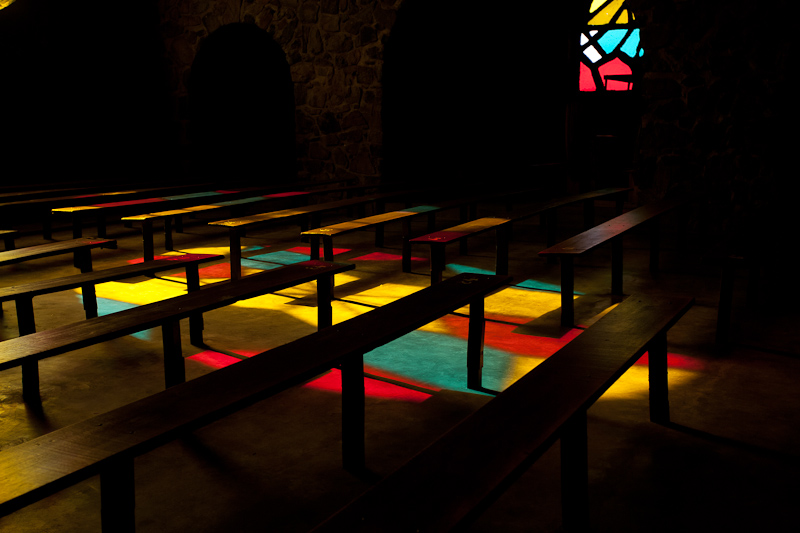Rwandan Genocide
I entered Rwanda in its North-West corner, settling in Gisenyi on the shores of Lake Kivu.
The town is joined with Goma, the infamous violence hotspot of the Democratic Republic of Congo's Eastern
provinces.
In this shot you see the inviting shoreline of Gisenyi, laced with palm trees, sand, and kids
playing on the pier. However, in the background of this image Goma can be seen,
as well as the faint outline of the mountains of the DRC. The morning I left this town the UN
initiated widespread attacks around Goma and the Virunga Volcanoes, prompting all westerners based
in Gisenyi to flee the area.
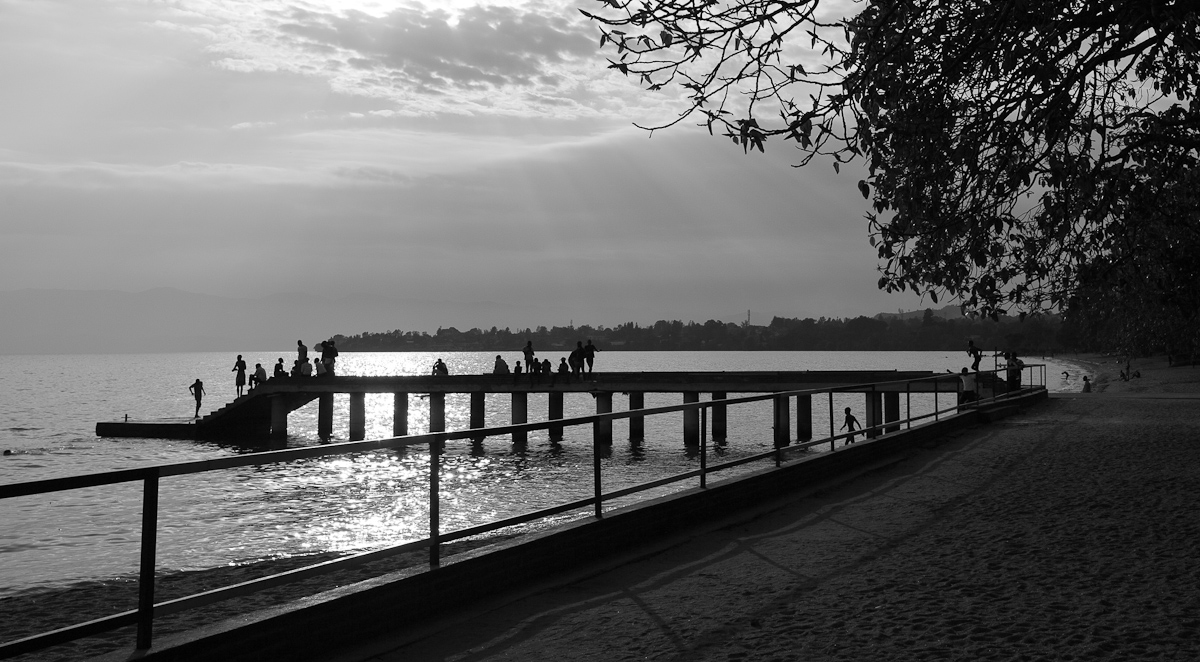
I made my way down from Gisenyi to Kibuye by boat on Lake Kivu. This area is famous for its amazing
scenery, where the green hills rise from the Lake. Sadly, it is also famous for being the area
where the 1994 genocide was most thorough: over 90% of the Tutsi population was murdered. I
stayed at Home St Jean, a guesthouse overlooking the lake and ran by the local church. This same church
served as a shelter to over 11,000 Tutsis and moderate Hutus, but was stormed on April 17th 1994
by the Interahamwe (story here). Virtually everyone was murdered, and the church now serves as the region's
genocide memorial centre.
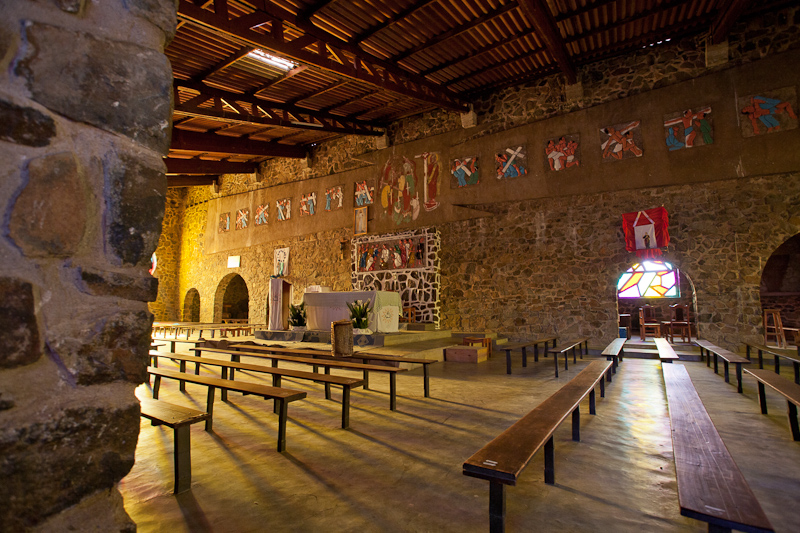
My trip ended in Kigali, the capital of Rwanda. The Rwanda Genocide Memorial serves as
a museum as well as a memorial and burial site.
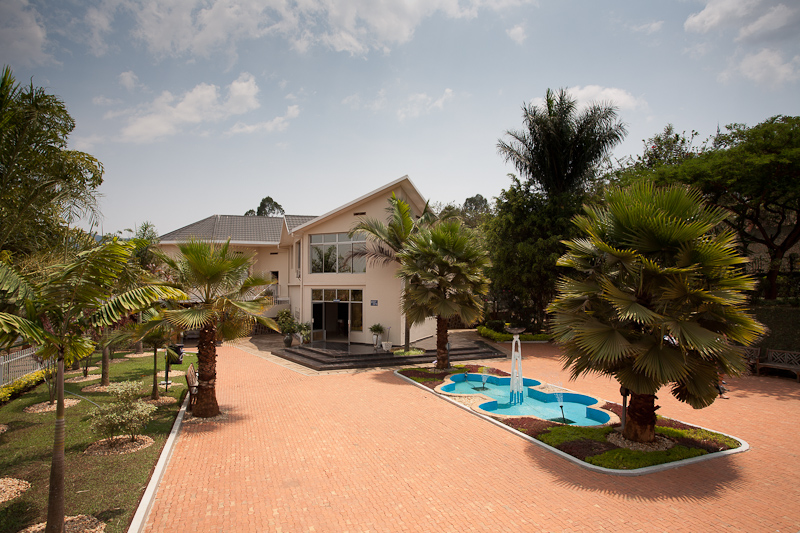
Any time a mass grave is discovered, which still happens occasionally, the remains are
transported to Kigali and placed in one of theaw many large tombs.
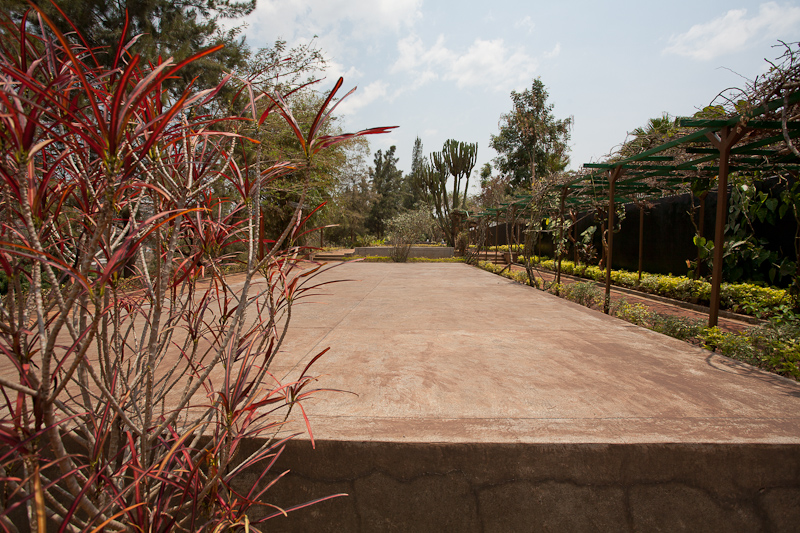
Towards the south of Kigali is another memorial site. The hotbed here was the Ecole Technique
Officielle (ETO), which served as a place of refuge as the genocide was kicking off in Kigali.
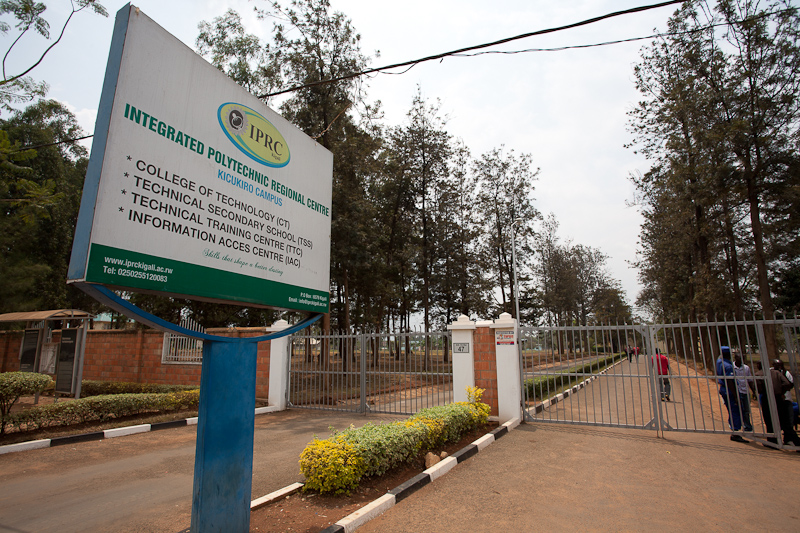
As can be read on this sign just outside the university, Belgian peacekeepers left the
thousands of refugees to the Interahamwe. They killed many of them, and marched survivors up the hill.

At this hill a memorial centre now stands, with all the names of the people killed. There's also
a number of offices with support staff, including psychologists who talk to survivors.
